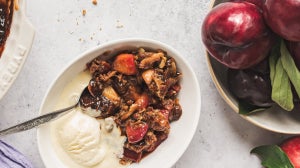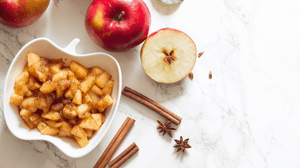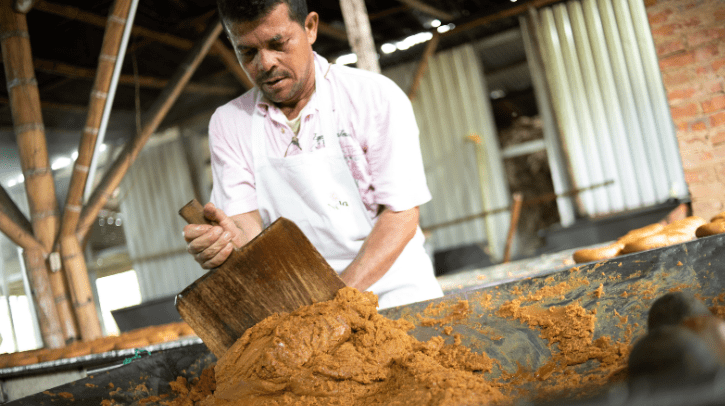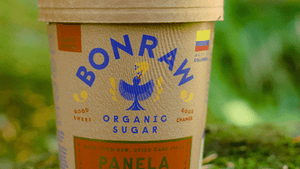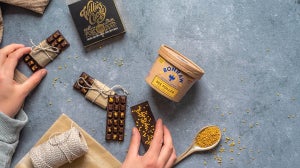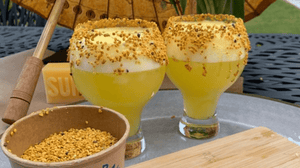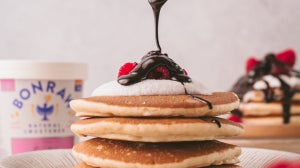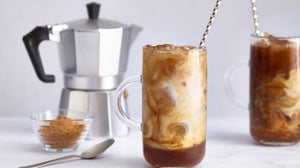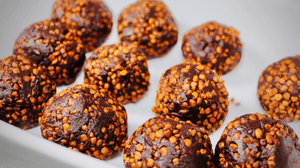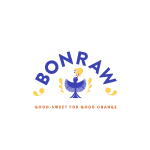
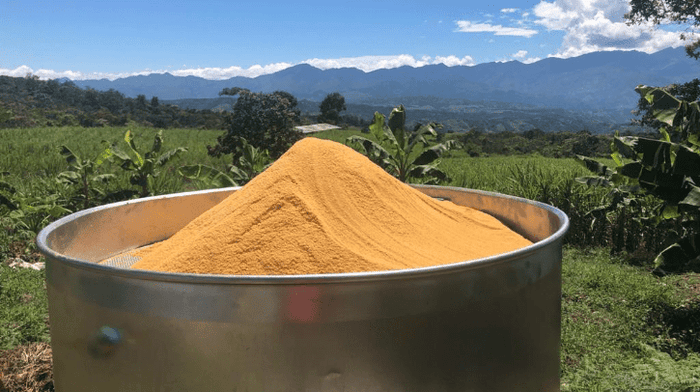
Panela is a food traditionally produced and consumed in practically all tropical and subtropical regions since sugarcane arrived with the Spanish Conquest more than 500 years ago. It is classified by the Food and Agriculture Organization (FAO) of the United Nations (UN) as ‘’non-centrifugal sugar’ and has many different names worldwide. You might have come across names like Sucanat, Rapadura, Jaggery and BONRAW’s very own Panela, The Raw Dried Cane Juice. But why does it have so many names, and what do they mean?
Let’s start with how Panela is made…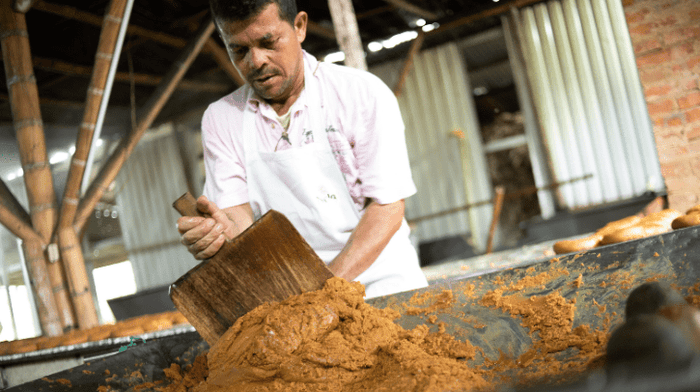
The production of Panela involves extracting the juice from the sugarcane, filtering it for impurities, evaporating the water content from the juice, crystallizing the syrup, drying it into cone moulds and packaging it.
The majority of Panela production takes place on small scale on-farm facilities, the sugarcane is harvested by hand with traditional technology. Production is small and made in batches. Some countries like Colombia have government programs to enhance Panela production through the introduction of better technology and practices that reduce energy use and improve the quality of production. These programs also provide marketing support, connecting these rural farmers with buyers like BONRAW.
There is an industry that exceeds the scale of these rural producers, and they reside in countries like India, Colombia, Brazil, and Costa Rica. Within them a larger Panela industry exists, processing cane sugar from other farmers with improved technology, energy efficiency, and better processing to obtain economies of scale and homogeneous quality.
To understand the different names of Panela it’s first important to know that, whether the product’s name is Jaggery, Gur or Rapadura, they are all classified as non-centrifugal cane sugars. They are a concentrated product of cane juice, without the separation of the molasses from the crystal. Anything else that differentiates them is minor.
So, let’s explore how Panela manifests in different cultures…
So, let’s explore how Panela manifests in different cultures…
Region: Asia
- India & Pakistan: Jaggery or Gur
- Thailand: Namtan Tanode
- Japan: Kokuto, Black Sugar (Kuro Sato)
- Philippines: Mocavado, Panocha, Panutsa
- Sri Lanka: Hakuru, Vellam
- Malaysia: Gula Melaka
- Indonesia: Gulu Java, Gula Merah
- Laos: Nam oy
Region: Oceania
- Australia: Panela
Region: Latin America
- Mexico: Piloncillo
- Guatemala: Panela, Rapadura
- Costa Rica, Nicaragua: Tapa dulce, Dulce
- Colombia, Ecuador: Panela
- Chile: Chancaca
- Guyana: Demerara
- Venezuela: Papelón, Panela
- Peru, Bolivia: Chancaca
- Brazil: Rapadura
- Argentina: Azúcar integral, azúcar panela
Region: Africa
- Nigeria, Kenya, South Africa: Jaggery
- Swahili speaking countries: Sukari Njumru
- Mauritius: Demerara
Region: North America
- USA, Canada: Raw sugar, Evaporated cane juice
Region: Europe
- UK: Muscovado
- France: Cassonade
- Germany: Vollrohrzucker
Non-centrifugal sugar is also often referred to as unrefined (raw, crude, complete) cane sugar, as that refers to the process of centrifugation where sucrose crystals are removed from the molasses. This is the process that unrefined sugars don’t go through. BONRAW’s name for Panela also relates to the lack of processing and refining it has endured, ‘raw dried cane juice’ refers to the raw product or ‘the sugarcane’ and it also references the process of which the sugarcane becomes the Panela we know and love.
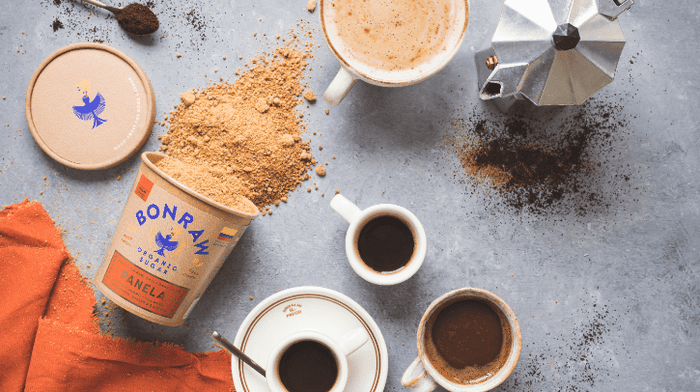
Do you know more names for non-centrifugal sugar? Get in touch, we’d love to add to our list.
Source: PanelaMonitor.org

Related Articles
